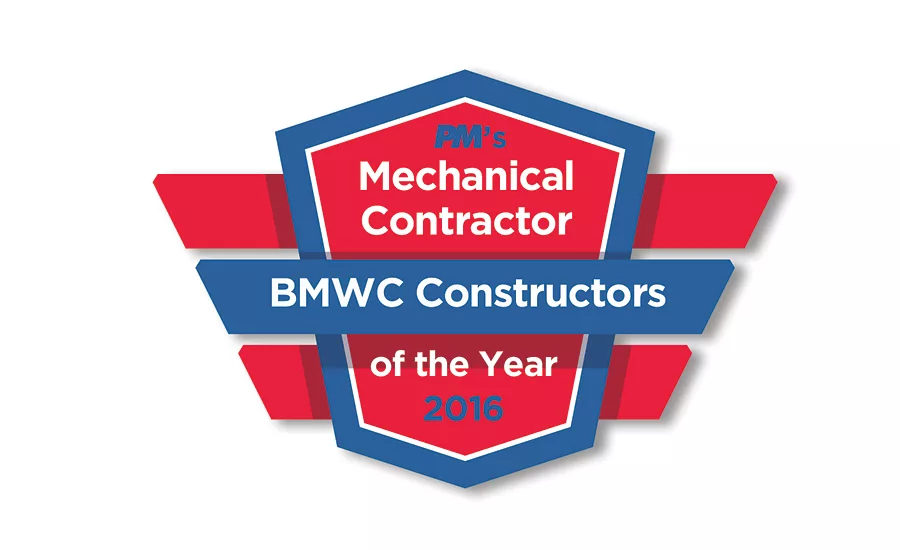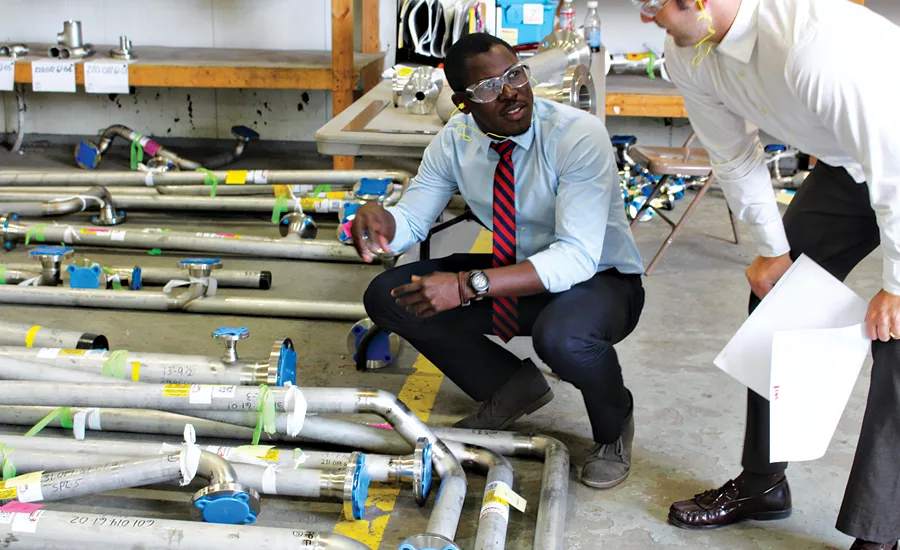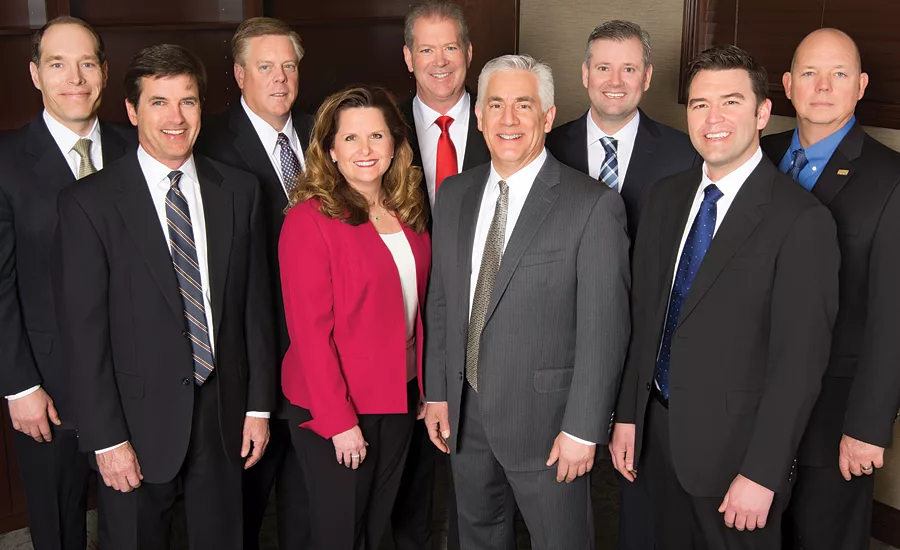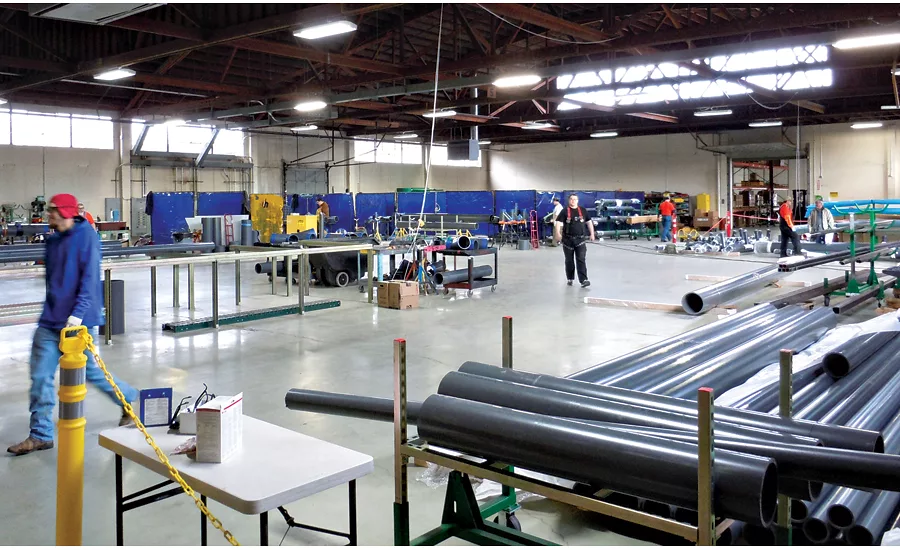PM's 2016 Mechanical Contractor of the Year: BMWC Constructors
Not many leaders of mechanical contracting firms can say they are still working for the same company they started at after college.




Not many leaders of mechanical contracting firms can say they are still working for the same company they started at after college. Well, unless you’re in a family business. But Brian Acton has been at Indianapolis-based BMWC Constructors — which has never been a family-run entity — for more than 31 years. It’s the only company he’s worked for.
Acton studied mechanical engineering, construction engineering and management at Purdue University in the 1980s. A fraternity brother who was interning at BMWC at the time convinced him to interview with the mechanical contractor.
“I graduated in December 1984, interviewed with BMWC before Christmas and started there on Jan. 4,” Acton recalls. “I started out as a project engineer and was assigned to a jobsite in northern Indiana. We were a small company, so as one of the only project engineers in the region, I was lucky enough to have an opportunity to see nearly every project we did up there.”
He worked different jobs and kept climbing up the corporate ladder until he was named president and CEO of the company in 2010. His ascension up the ranks was possible because of BMWC’s unique management structure. As a project manager, Acton also became an owner in the company. The idea began with founder Jack Baker, who bought the company with two partners from a residential heating contractor in 1955.
“Jack wondered early on about how to transfer the business when he and his partners were ready to retire, while allowing the business to continue to grow and prosper for future generations,” Acton notes. Baker started a stock ownership plan that today allows successful project managers to become owners of the company.
This company culture gives managers a stake in the success of BMWC as a whole, not just on projects they are working on. So areas such as safety, lean construction, sustainability and innovation have taken center stage to ensure the viability of the company for future owners. Those future owners are being groomed through BMWC’s internship programs.
“Safety for Life” is the mantra at BMWC, from Acton on down to the jobsite crews. “The entire leadership team of the company is committed to safety 110%,” notes John Manta, BMWC’s vice president of marketing and sales. “We don’t do anything until we talk about safety. It’s the first thing talked about every day, at every meeting. The trick is to keep the message fresh so it’s always the highest priority.”
At BMWC Constructors, successful and profitable projects start with lean construction practices, which emphasize planning processes to maximize productivity and minimize waste. It’s a collaborative effort between building owners, construction managers, jobsite foremen and skilled craftsmen to share knowledge and provide innovative solutions to perceived problems before anyone steps onto the jobsite. The focus is on the total performance of the project, not just certain portions of it.
Of course, technology is a big component of project productivity. A member of the Mechanical Contractors Association of America, BMWC is constantly innovating its construction methods, looking for safer and faster solutions for its customers. The company’s Innovation Catalog documents successful project improvements and is shared across the company every month.
“Any employee who comes up with an innovative idea — whether it’s a new method of welding or a piece of equipment to help people do their jobs better — can post it to the catalog and share it with the rest of the company,” Manta explains.
It’s for these reasons Plumbing & Mechanical selected BMWC Constructors as its 2016 Mechanical Contractor of the Year.
Changing safety behaviors
Several years ago, BMWC hired a safety director with full authority to craft safety policies and monitor on-the-job practices. BMWC’s total recordable incident rate, which is reported to the Occupational Safety and Health Administration, went down to about a two, Acton says. A good TRIR is one or less. Higher numbers could limit a contractor’s ability to bid work.
“When I came in as president, I thought the issue of safety has to start from the top, it has to come from me,” Acton says. “We started looking at the vision of safety, where we wanted us to go and how we were going to get there. It became my personal mantra that we adopted as a company, coast-to-coast. I probably spend about 40% to 50% of my time each week on exploring ways to enhance our safety. We drive that message through our talented executives and operational leadership teams into the field to ensure the message is consistent.”
All BMWC executive leaders are required to be on a jobsite once a week — what Acton calls executive safety sponsors. Their presence is meant to foster good relationships between crews and management, as well as emphasizing BMWC’s core principles of safety, lean construction and sustainability.
Project managers, or project CEOs, are responsible for everything on a project, such as budget, quality, manpower and safety. So BMWC makes sure these project manager/owners are well-trained on safety issues and have the right tools to keep everyone on that jobsite safe and healthy.
“We’ve moved into this cultural and behavioral revolution now to where we want our employees to be safe for their families and encourage good habits,” Acton adds. “It’s a holistic approach. For the last five years we’ve driven our recordable rate down below one. We want to get it to zero, but it’s not the goal. The goal is to prevent injuries to everybody. The numbers are going to take care of themselves. We want to make sure everybody goes home the same way they came in.”
Sometimes the message becomes more clear when employees’ families get involved. It’s called behavioral-based safety. Earlier this year, BMWC had a contest where employees made videos at home with their families to promote safety. Last year, it sent out home audit kits to employees’ homes — watch a short video, then audit your own home for safety issues.
Today, the company has won recognition from numerous national, state and local organizations for its safety program. In 2004, it received VPP certification from OSHA and recently was given mobile VPP status for all jobs within the state. OSHA’s Voluntary Protection Program recognizes employers who have implemented effective safety and health management systems. Participants are exempt from OSHA inspections while they maintain their status, but are re-evaluated every three to five years.
“It’s like the Good Housekeeping Seal for safety programs,” Manta explains. “We were the first mechanical contractor in Indiana to achieve it. It’s a great marketing accomplishment and it means a lot to our employees that they work for a VPP company.”
BMWC’s ever-evolving safety process now includes a serious injury frequency program, which examines incidents that have the potential to seriously alter a worker’s life, including serious injuries or fatalities, damage to a client’s equipment or people, or an environmental issue.
“It’s a paradigm shift from the industry,” Acton says. “If you eliminate an eye injury, how is that going to eliminate a fatality? It’s not. If you can eliminate a dropped object falling a hundred feet, that’s going to eliminate a fatality. I believe it’s where we need to get to, what winning in safety means.”
Investing in the future
Back when Baker started the company, his idea was to grow the mechanical contracting firm not by bringing in family members, but by aggessively recruiting the best people to work at BMWC and promoting from within the ranks. So BMWC hired a recruiting manager and began an internship program. It recruits management talent for internships from universities all over the country.
The company has five locations: Indianapolis (corporate headquarters); Munster, Ind.; Seattle; Portland, Ore.; and Toledo, Ohio. Typically interns are sent to parts of the country they’re not familiar with. “We want to get them out of their comfort zones and see what they are made of,” Manta says. “And we put them into different areas: fab shop, quality, safety, marketing, virtual design. Usually, we end up hiring interns as full-time employees.”
That’s how BMWC defines succession planning: Bringing in new people with new ideas through internships and recruiting, then training them in the company culture so they can start the ascent to project manager/shareholder and further up the executive chain.
“We’ve held strict to the notion that when you come to work for this company, you can make it to the top, but not based on your last name,” Acton notes. “The ultimate vision for many employees on the construction side is to get to become a shareholder. Once they get there, they want to be a part of something bigger.
“It’s the culture we’ve created here that allows high-potential individuals to achieve anything they want to try to go after. If you have what it takes and you have that passion to champion the effort, we’re going to find an opportunity for you to grow.”
The company invests in training its people, whether it’s the “white shirts” in the office or the jobsite crews in the field, headed up by a training manager. “We now have a training curriculum for positions at nearly every level, which we never had before. That gives people the opportunity and a path to move up in the organization if they have the ability and desire,” Manta explains.
He adds that once an owner retires, he is no longer a shareholder of the company, a concept going back to Baker and the origins of the company — only current owners should have input into how the business is run.
Plumbing and mechanical contractors continue to have trouble in the skilled labor market as retiring workers and those who left the industry during the Great Recession are not being replaced at a high rate. A union contractor, BMWC remains committed to investing in apprenticeships and other programs to lure young people, including women, into lucrative mechanical contracting careers.
“It’s unfortunate that in today’s world, we’re really stressing a college education while closing trade schools,” Acton says. “People still don’t understand you can make a good living working in the trades.
“I read that in the generation following the millenials, 50% of its workforce will be women. Construction, from a craft level, typically has not been attractive to women. We need to change that. If women are going to be a major part of the future workforce and we can’t get them interested in the construction trades, we’re going to have a larger labor shortage. If we can’t get people to work with their hands, how are we going to build the country?”
Technology investment is a must
It’s the shortage of labor that pushes BMWC to constantly strive to increase its productivity level through safety programs, lean construction and technology investment. It’s a matter of survival.
“If we don’t figure out a way to be more productive and spend less craft-hours and get the same amount of work done, we’ll suffer,” Acton says. “We’ve got to be smarter about how we do our business and how we construct. As a contractor, if you’re not paying attention to that, your growth is going to be limited. While this industry hasn’t changed much in maybe 50 or 75 years, we’ve now seen significant change in the last five years and it’s pace is picking up.”
Virtual design, which includes building information modeling, and prefabrication are two areas BMWC continues to expand for higher production rates. And many commercial and industrial building owners are requiring their contractor partners to provide them these services in order to work on a project.
“The best way to keep our maintenance contract customers, to be the contractor of choice to them, is to prove that we can do things faster or better than our competition,” Manta says.
Acton adds: “We’re always thinking about how to serve our customers better, to provide them more value. How can we be more efficient? Looking at new technologies, different ways of doing things and seeing how they may fit into our business model is what the Innovation Catalog is about.”
For example, virtual and augmented reality allow mechanical contractors to go into a facility, scan it and overlay the engineer’s model on the scan. The VR or AR glasses allow the user to “walk” through the model and see potential barriers to efficient construction and operation.
“You actually can build a project in virtual and lay out all the sequencing and understand the most efficient way to build it, then design and build it that way,” Acton explains. “It’s so much quicker and efficient. The cost savings are incredible.
“The trick is the commitment part. It’s easy to say you’re going to invest in technology, but you have to stick with it. You can’t be wishy-washy. We’ve made sure that if we’re going to commit to it, we’re going to do it. That means you can’t do everything. You’ve got to pick and choose what makes sense for your business.”
This article was originally titled “Commitment to productivity” in the August 2016 edition of Plumbing & Mechanical.
Looking for a reprint of this article?
From high-res PDFs to custom plaques, order your copy today!



